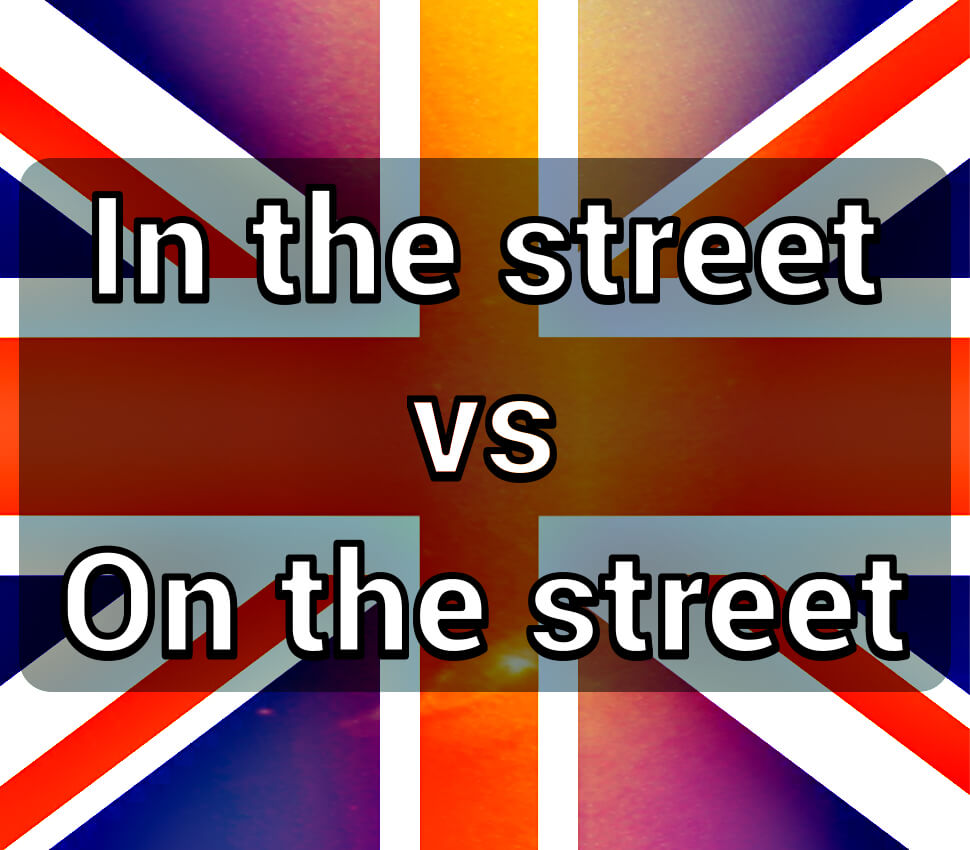If you are confused by these two phrases, you are not alone.
Most of the time, they mean exactly the same and can be used interchangeably.
But that is not always the case.
To learn more, read on.
Meaning #1: Public road

If you want to say that something happens on a public road in a town, you could use both “in the street” and “on the street”.
As a general rule, “in the street” is more common than “on the street” in British English, but both can be used as there is no difference in meaning.
In American English, “on the street” is way more common.
|
|
|
|
Meaning #2: Street name

In the UK, there are many names that can be used to describe what type of road a particular street is.
The proper term for these names is “street suffixes”.
For the purpose of this explanation, I will only use two examples: “High Street” and “Station Road”.
They are the most common street names in England so it is fitting to use them.
Both “in” and “on” can be used with street names in UK English.
|
|
|
|
In US English, the preposition “on” is used.
Meaning #3: Without a home

When we talk about homeless people, or even stray animals, we can say that they live “on the street” or “on the streets”.
|
|
|
|
We do not often say that someone lives “in the street”.
Meaning #4: Average person

If you want to talk about average, ordinary people as a group, you can say “the man in the street”.
You can even say “the woman in the street” if you want to specifically talk about the average woman.
We often use it when talking about how the average citizen feels about something, or how the are affected by a particular issue, etc.
|
|
It is possible to use “on” and say “the man on the street”, but it is less common.
Summary
- “In the street” is used when talking about things happening on public roads. It can also be used with street names or when talking about the average, ordinary people.
- “On the street” is used in the same way as “in the street”, but it can also be used to talk about people without a home who live outside.



Leave a Comment